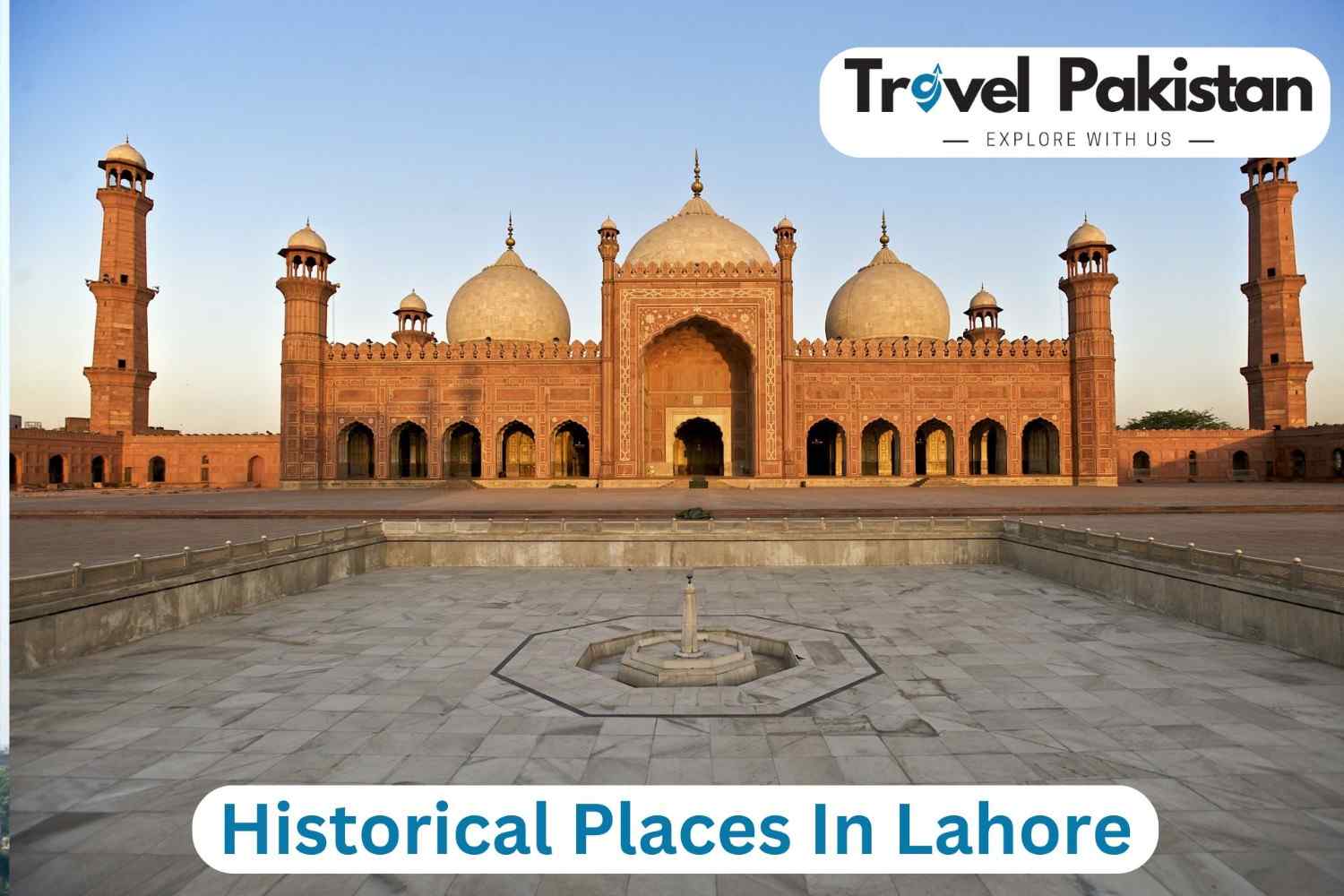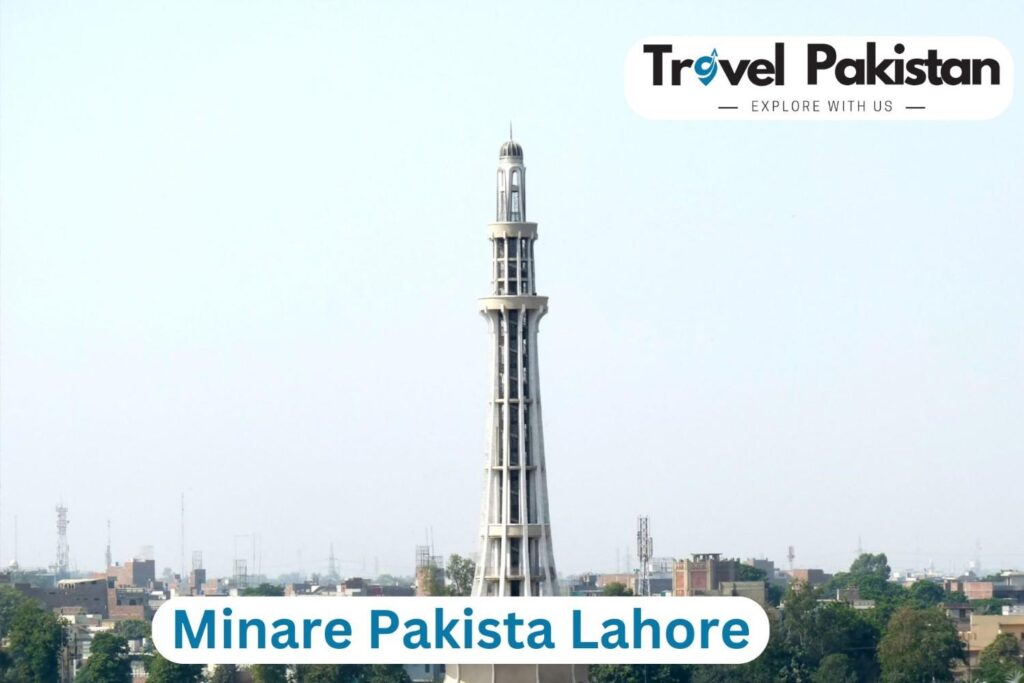Exploring Historical Places in Lahore: A Journey Through Time

Exploring Historical Places in Lahore: A Journey Through Time
Lahore is the cultural hub of Pakistan often referred to as the heart of Pakistan. Lahore is a city that aesthetically fuses history, architecture, and tradition. Lahore has a rich history dating back to centuries-old times that have shaped the subcontinent. Lahore is home to several historical places, each one of them telling the story of the Mughal Empire, British colonial rule, and Pakistan’s early years.
In this article, we’ll take a deeper look at some of the most iconic historical places in Lahore that are a must-visit.
Table of Contents
ToggleHistorical Places in Lahore
The Lahore Fort (Shahi Qila)
This historical site is internationally acclaimed and holds UNESCO World Heritage status. The Shahi Qila has truly endured the test of historical tides including countless battles, sieges, and royal gatherings.
The architecture of Lahore Fort is a blend of Mughal, Persian, and Islamic overtones. The fort is surrounded by grand courtyards, exquisite gardens, and intricate frescoes. It also houses the Sheesh Mahal which is a palace of mirrors featuring amazing glasswork.
Badshahi Mosque
Lahore is mostly known and remembered due to this monumental mosque called the Badshahi Mosque. Built by Emperor Aurangzeb in 1673, the Badshahi Mosque is one of the largest and most majestic mosques in the world.
It is rustic in color as its solid walls rise from the ground and the top of the minarets are adorned with white marble. Erect right across the Lahore Fort, the mosque can house 100,000 worshipers and is most busy on Fridays. One catches an awe while exploring the details of its exterior and interior architectural features.
This is one of the most famous historical places in Pakistan.
Minar-e-Pakistan
Minar-e-Pakistan, located in Iqbal Park, symbolizes the struggles and sacrifices that led to Pakistan’s formation. Designed by Nasreddin Murat Khan, it blends Islamic and Mughal architecture, standing as a powerful reminder of the Lahore Resolution of 1940.

The monument attracts tourists with its historical significance, stunning views, and cultural events held in Iqbal Park. Being the most famous place in Lahore, today, it remains an enduring symbol of Pakistan’s journey toward independence and self-determination.
Shalimar Gardens
Built out of pure passion shaped over centuries of historical events and values, Shalimar Gardens is a testament to the pure skill and grandeur of the Mughal Empire. The Shalimar Gardens were built by Emperor Shah Jahan in the mid-1600s.
The gardens feature a contemporary blend of nature and architecture. This historic place is a great place for a peaceful stroll or to simply unwind while exploring Lahore’s royal past.
Hiran Minar
Hiran is Urdu for Deer or an Antelope. As the name suggests, this minaret is built in remembrance of a particularly important antilop. Hiran Minar was built by Emperor Jahangir in memory of his pet antelope. The Minaret is surrounded by beautiful gardens and overlooks a very large water tank.
This historic place is a great place to get in touch with nature and to take a serene walk or a family picnic.
Lahore Museum
Looking for the history of the subcontinent and the British Rule that has shaped Pakistan. Then visit the Lahore Museum. Built-in 1894 on this historic land, this museum will immerse you in the artifacts, arts, and crafts of the precious history of the region including the Mughals.
If that is not enough, then you’ll surely be captivated by the sculptures, Islamic calligraphy, and historical manuscripts housed in this museum. The Lahore Museum also gives a little look and feel of the ancient civilizations of the subcontinent.
Walled City of Lahore
Want to step back in time for real? Then visit the old walled city of Lahore. Once this exclusive historic city was protected by multiple gates built by the British of which only one exists to date. The walled city encompasses narrow intricate streets and paths leading to historical houses and Havelis opening into old markets.
This is also a great place for local shopping and to negotiate rates. Don’t miss the iconic Lahore Gate, Delhi Gate, and Mor Gate, which were once part of the city’s fortifications.
Data Darbar
Walk into the world of saints and explore their religious history. In remembrance of the Sufi saint Hazrat Ali Hajveri, Data Darbar is a shrine for this Sufi saint also known as Data Gunj Buksh.
Apart from being a temple where offerings are made and wishes come true, Data Darbar is also a cultural spot with the qawwali and the dhamals (sufi dances) that transpire here more often than not. There is plenty of food to go around for everyone here.
Sheesh Mahal (Palace of Mirrors)
Testament to the Mughal ancient visual arts, the Sheesh Mahal is a palace adorned with mirrors on the walls and the roof. It was built by Mughal Emperor Shah Jahan. The palace invites sunlight through paved pathways that reflect from the walls and the roof to tell an immaculate visual story that a few could read back in ancient times.
Built within the Shahi Qila, this magnificent historical building is one of the highlights of Lahore Fort and provides a glimpse into the luxurious lifestyle of Mughal royalty.
The Samadhi of Ranjit Singh
The center of Sikh pilgrimage in the region, the Samadhi of Ranjit Singh was built to honor the foundation of the Sikh Empire “Ranjit Singh”. This mausoleum is dedicated to Ranjit Singh.
Sikhism has left a deep impact on Pakistan’s history and culture and this mausoleum is a testament to this impact. Built in 1948, both Pakistani and Indian Sikhs folk to this historical place in numbers to offer their prayers and grace to their founder.
Conclusion
We hope that now you are up to speed on the history of Lahore and the significance of the culture of Pakistan. Lahore is a city that beautifully blends history, architecture, and tradition. Iconic historical places like the Lahore Fort, Badshahi Mosque, and Minar-e-Pakistan tell the story of Lahore’s rich past, from the Mughal Empire to Pakistan’s birth.
The Shalimar Gardens and Hiran Minar showcase the grandeur of Mughal design, while the Lahore Museum and Walled City offer insights into the region’s cultural evolution. These historical landmarks continue to attract tourists and provide a glimpse into Lahore’s diverse heritage.
FAQs
1. What are some famous historical places in Lahore?
Lahore Fort, Badshahi Mosque, Minar-e-Pakistan, Shalimar Gardens, and the Walled City of Lahore; are some of the most significant historical places in Lahore.
2. What makes Lahore’s historical buildings significant?
Lahore’s historical buildings give a view into the past and represent the values, culture, arts, and crafts of the predecessors.
3. Where can I explore the religious historical places of Pakistan in Lahore?
Badshahi Mosque, Data Darbar, and the Samadhi of Ranjit Singh are among the most valuable religious historical places in Lahore.
4. What are the must-visit historic places in Lahore?
When in Lahore, we recommend visiting the Lahore Fort, Badshahi Mosque, Samadhi of Ranjit Singh, and the Walled City of Lahore. Each one of them is significant and offers a lot to fathom.
All Categories
Recent Posts
Largest Dams in Sindh, Pakistan
Best Museums in Pakistan
Jheel Saif Ul Malook – Your Travel Guide
Tags

United Kingdom
Quick booking process
+ 1- (246) 333-0089



